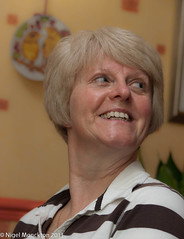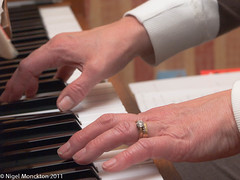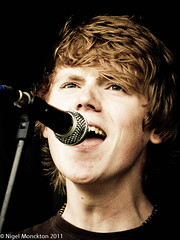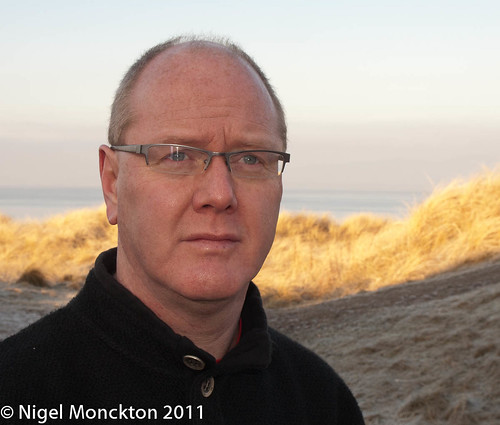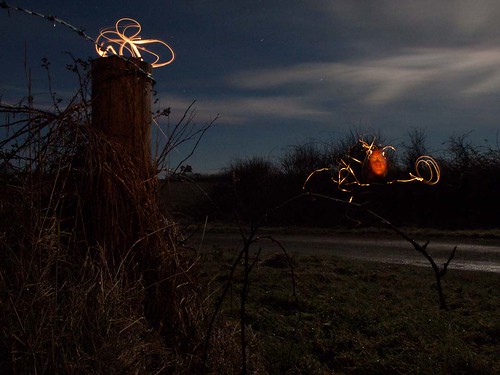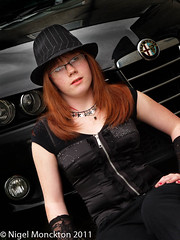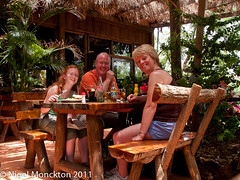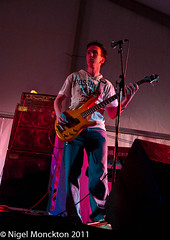The stated aim of this exercise is to examine the effect of changing focal length on the character of a portrait.
It is fairly standard photographic knowledge that the use of a wide angle lens is not recommended for portraiture because of the distortion – a medium telephoto of around 80-135mm (35mm equivalent) is usually recommended as a compromise between a pleasing image and being close enough to achieve some rapport with the subject.
The set-up was Naomi again – in one of the garden locations identified in exercise 2. The weather was cloudy, so lighting was well diffused, and the location meant that for all except the very wide angle shots I was able to exclude the featureless sky. I kept a constant aperture (f/4) and used three lenses to vary the focal length from 200mm (400mm equivalent FoV) to 7mm (14mm equivalent FoV). As far as possible I kept the subject roughly the same size in the image.
From left to right these were taken at approx. 200mm, 150mm and 100mm (400/300/200 in 35mm equivalents)
To all intents and purposes these shots are the same – they have a very pleasing rendition of perspective, the subject is reasonably isolated from the background and their is little to choose between them. From the photographers operational viewpoint the last shot felt more engaging because I was considerably closer to the subject so it was more of a joint activity.
This takes us firmly into medium telephoto territory – the next two shots are at 50mm and 27mm (100/54 in 35mm equivalent) to show the transition from medium telephoto to standard/wide angle territory. 50mm on the left.
The 50mm(100) is still perfectly acceptable but the 27mm (54) is beginning to show some distortion of facial features. For example the near eye seems somewhat larger and the curve of the nose is exaggerated. It is just acceptable at a push – but the situation could be rescued in one of two ways.
If the photo was not to be used large I could have pulled back to produce a smaller image and then cropped it. Or I could perhaps have chosen a different pose – a profile shot would have less obvious distortion. Both these tips were taken from Tom Ang’s Digital Photographers Handbook.
The next two shots are largely for novelty value. Unsurprisingly they are not effective as portraits but my daughter was good enough to let me show them anyhow. The left hand is 10mm (20mm – 35 equivalent) and the right is 7mm (14mm). I have seen these extreme wide angles used in fashion and club photography in some magazines I have read, but it is fair to say that portraiture is not their natural territory.


Conclusions
As expected telephotos produce a more pleasing rendition in portrait photos, but for operational purposes medium telephotos are probably more effective because they allow closer interaction with the subject.
















